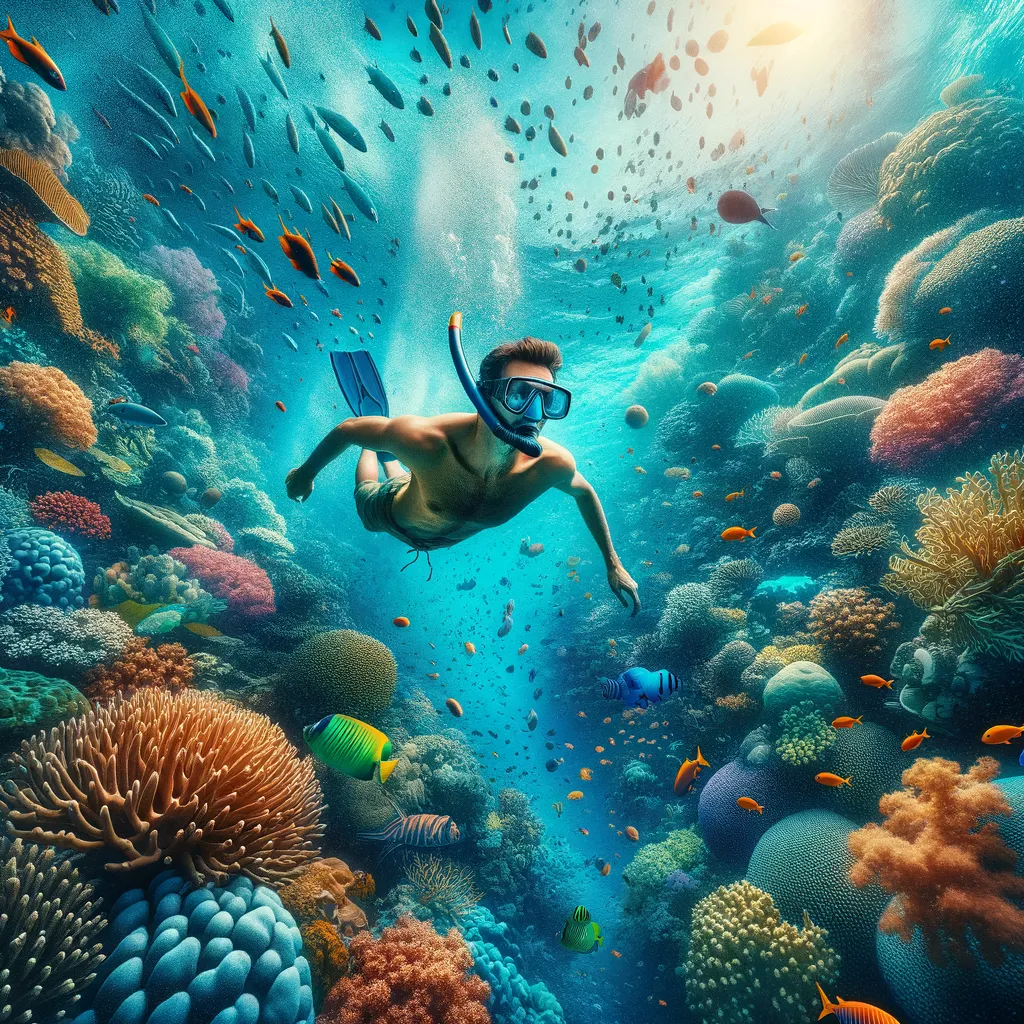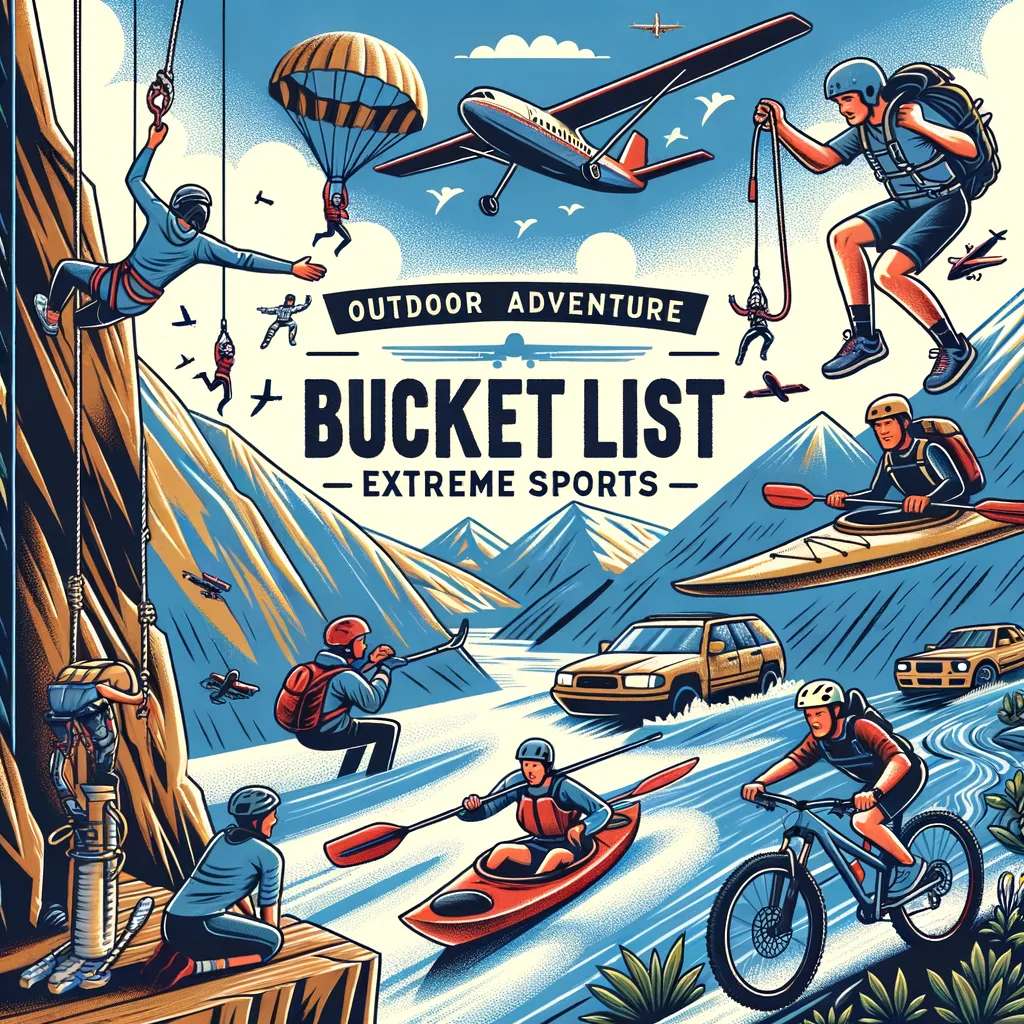Exploring the Underwater Wonderland: A Family Guide to Snorkeling in the Coral Triangle
Welcome, adventurous families! Are you looking for a thrilling yet educational experience that brings you closer to nature? Look no further than snorkeling in the magnificent Coral Triangle. This marine area, known as the “Amazon of the Seas,” is a global center of marine biodiversity. It’s a paradise for snorkelers of all ages. Before diving into the crystal-clear waters, let’s embark on a preparatory journey filled with tips, insights, and must-know info to make your family snorkeling adventure as memorable and safe as possible.
But first, why not equip yourself with the necessary gear for your camping and outdoor adventures? Check out Camping for top-notch choices. And to deepen your camping knowledge, Learn more here.
Understanding the Coral Triangle
The Coral Triangle is an underwater marvel located in the southwestern part of the Pacific Ocean. It covers areas across six countries: Indonesia, Malaysia, the Philippines, Papua New Guinea, Timor-Leste, and Solomon Islands. This region is home to more than 600 different species of reef-building corals and over 2,000 species of fish. The diversity and vibrancy of marine life here are unparalleled, making it an ideal destination for families looking to explore the beauty of the underwater world through snorkeling.
Why Snorkeling?
Snorkeling is a fantastic way for you and your family to witness the majestic beauty of the Coral Triangle’s marine biodiversity without the need for extensive training or equipment. It’s accessible, easy to learn, and provides an educational experience that kids and adults alike will treasure. You’re not just exploring; you’re also learning about the importance of marine conservation and the role of coral reefs in our global ecosystem.
Preparing for Your Snorkeling Adventure
- Choose the Right Gear: Comfort and safety are paramount. Ensure you have high-quality snorkels, masks, and fins. It’s worth investing in gear that fits well to avoid any discomfort or distractions while exploring underwater wonders.
- Practice Makes Perfect: Particularly for young children or first-time snorkelers, practice snorkeling in a swimming pool or calm beach area to get accustomed to the equipment and breathing technique.
- Health and Safety: Always apply waterproof sunscreen to protect against the strong sun rays, and consider wearing rash guards for extra protection. Ensure everyone stays hydrated and knows the basic safety protocols, like snorkeling in groups and staying within designated areas.
- Respect Marine Life: One of the most important aspects of snorkeling in such a biodiverse region is respecting the environment. Teach your family about the importance of not touching or stepping on coral reefs as they are living organisms and are very fragile.
Setting foot (or fin!) into the Coral Triangle’s underwater sanctuary is an adventure like no other. It’s not only an opportunity for family bonding but also a chance to educate your loved ones about the significance of marine conservation. In the following sections, we’ll dive deeper into the best spots for family snorkeling in the Coral Triangle, the best times to visit, and more top tips to make your snorkeling trip a success.

5 Essential Tips for Parents Planning a Snorkeling Adventure in the Coral Triangle
Welcome to a world teeming with life and color below the sea! Are you ready to introduce your family to the wonders of the Coral Triangle, the most bio-diverse marine area on the planet? Preparing for a snorkeling trip in this aquatic paradise is an exciting process, and ensuring your family is well-prepared is key to a memorable and safe experience. Here are five essential tips to help parents plan the perfect snorkeling adventure in the Coral Triangle.
1. Understanding the Basics of the Coral Triangle
The Coral Triangle covers waters of Indonesia, Malaysia, the Philippines, Papua New Guinea, Timor-Leste, and the Solomon Islands. It’s home to an incredible variety of marine life, with over 600 types of coral and 2000 species of fish. This rich biodiversity not only offers a stunning underwater spectacle but also presents a unique educational opportunity for children and adults alike. Emphasizing the ecological significance of this region before your trip can enrich the snorkeling experience for your family and foster a deeper respect for marine ecosystems.
2. Select the Right Snorkeling Gear
For a successful snorkeling trip, the right gear is essential. It’s important to choose snorkels, masks, and fins that fit well, especially for children, to ensure comfort and safety in the water. Consider purchasing or renting gear designed for kids to enhance their snorkeling experience. A well-fitted mask can prevent water from seeping in, and comfortable fins can help in easy navigation through the water, making the adventure enjoyable and fuss-free for everyone.
3. Safety Comes First
Safety should be your top priority while snorkeling in the Coral Triangle. Always opt for waterproof sunscreen to protect your family from harsh sun exposure and consider wearing long-sleeved rash guards for added UV protection. Hydration is key, so bring along plenty of water. When snorkeling, especially with children, ensure that everyone sticks to the buddy system and remains within designated snorkeling areas. Brief your family on what to do in an emergency, like using a whistle attached to their life jacket or snorkel vest.
4. Respect the Ocean and Its Inhabitants
Snorkeling offers an intimate glimpse into the marine world, and it’s our responsibility to minimize our impact. Teach your children the importance of not touching or stepping on corals, as they are living organisms and can be damaged easily. Also, remind them not to chase or touch marine animals. Explaining the impact of human actions on marine ecosystems can help cultivate a conservation-minded approach to snorkeling.
5. Choosing the Best Time and Place
Timing is crucial when planning your snorkeling trip to the Coral Triangle. The best time to visit is typically during the dry season, from April to December, when the sea is calmest and visibility is best. As for locations, consider spots known for calm waters and abundant marine life, such as the shallow reefs around Bali in Indonesia or the small, uninhabited islands in the Philippines. Each country within the Coral Triangle has its unique offerings, so research beforehand which areas are most suitable for families and beginner snorkelers.
Armed with the right knowledge and preparations, your snorkeling trip to the Coral Triangle will not only be safe and comfortable but also profoundly enriching. It’s an excellent opportunity for your family to bond over the beauty of nature while learning about the importance of marine conservation. As you explore the vibrant underwater world, you’ll create lasting memories and a deeper appreciation for our planet’s incredible biodiversity. Remember, preparation is the key to unlocking the full wonder of snorkeling in the Coral Triangle, ensuring an adventure that your family will treasure forever.
Lastly, engaging with local guides or joining organized tours can offer invaluable insights and enhance your snorkeling experience. These professionals can provide educational information about the marine life you encounter and ensure you visit the best spots safely. So, gear up, dive in, and prepare for an underwater journey that will highlight the beauty of the Coral Triangle, leaving your family with not just memories, but stories to tell.
Disclaimer
The articles available via our website provide general information only and we strongly urge readers to exercise caution and conduct their own thorough research and fact-checking. The information presented should not be taken as absolute truth, and, to the maximum extent permitted by law, we will not be held liable for any inaccuracies or errors in the content. It is essential for individuals to independently verify and validate the information before making any decisions or taking any actions based on the articles.




